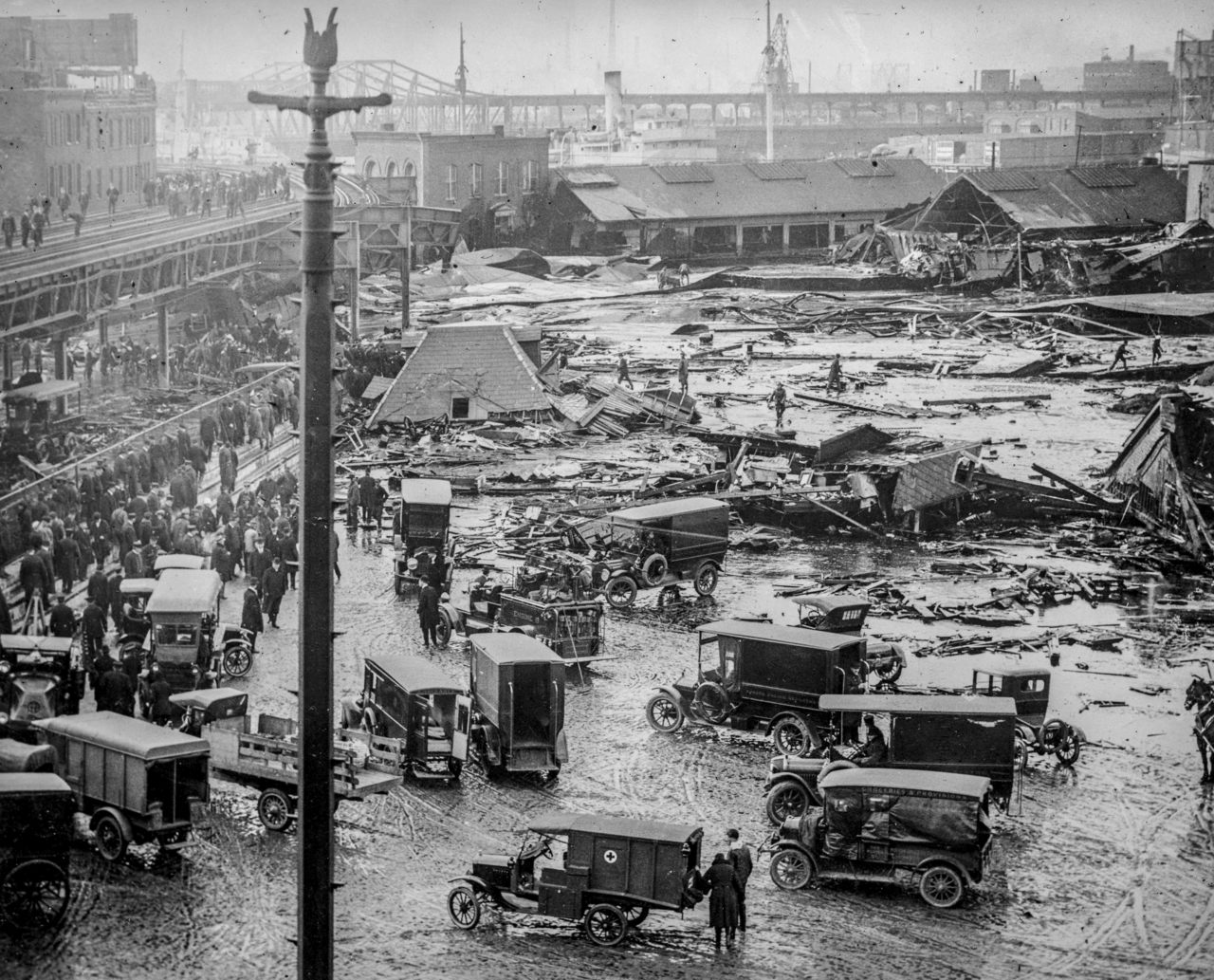One of the most interesting disasters in history: 1919 Boston Sugar Molasses Flood

On January 15, 1919, a strange incident took place in Boston, the capital of the state of Massachusetts, the United States.
On January 15, 1919 in Boston, Massachusetts, police officer Frank McManus received a call while he was on duty at noon. A few minutes later, the district was about to report the daily report that the police station had been waiting for, which was startled by an unusual noise. He called back to the street station quickly and passed his announcement: “Send almost all rescue vehicles and personnel here! A wave of molasses coming down Commercial Street!”

Minutes later, after the sudden reverberation of the cracking sound like a thunder heard in the street, the molasses in the huge tank began to flow towards the streets of the city. The tank that exploded was not a small tank. The diameter of the tank was thirty meters and its height were fifteen meters. It was made of cast iron and its capacity was around 2.2-2.5 million (more than 7.5 million liters) gallons. The wave of molasses flowing from the split tank to the street was more than five meters high and was traveling at a rate of fifty-five kilometers per hour in the area around the tank. It was not possible to escape from this wave. Everything was happening suddenly, and everything that came before him was sinking into this flood of molasses. As a result of the disaster, 21 people died, and 150 people were injured. Some of the deceased drowned in molasses, while others drifted towards Massachusetts Bay.
While half of those who lost their lives lose their lives on the day of the disaster; the other half could not be saved in the following days due to their severe wounds and infections. The pressure and mock wave caused by the explosion of the tank also damaged the surrounding buildings, houses and shops. As a part of the tank knocked over the columns, a bridge that passed the train was partially destroyed.

After the flood stopped, recovery and cleaning work was started. The injured were removed by the teams. Even horse carriages were stuck in molasses. They had to shoot the horses when it was not possible to take them out of their place. When even the pressurized water coming from the fire taps was not enough to clean the molasses, the sea water carried out from the bay was sprayed to the city. It took more than six months to completely clear the city streets, cinemas, businesses, cars and homes from sugar molasses. Streets and streets always remained brown during this time. During the next thirty years, there were reports of sugar molasses coming out of the streets and paving stones. On every hot summer day after the disaster, the people said that the streets still smell of treacle.
According to experts, people who suffered from molasses flood were not likely to be saved. Even those who could swim could not swim in molasses, which is 5-10 thousand times stickier than water molecules.
Two separate reasons were found in the background of the disaster. The first was to fill the tank at full capacity (over) on July 13. The carbon dioxide residue during fermentation also caused the pressure inside the tank to increase and burst.

The second reason was about the sudden change in weather conditions. While the weather was only two degrees the day before, the day of the accident exceeded the seasonal norm and approached forty degrees. Many people thought that the tank was exposed to excessive pressure as the molasses expanded as a result of this sudden change. The theory of the owner of the tank, The United States Industrial Alcohol Co., was completely different. During the litigation process, which has been keeping the courts busy for many years, the company claims that the explosion of the tank occurred as a result of sabotage and certainly did not accept responsibility.
Since there was no evidence to support the company’s claim, the court ruled in 1925 that the accident was only due to structural weakness. The liquor factory was sentenced to pay a fine of about $1 million.
Source: eksisozluk.com
